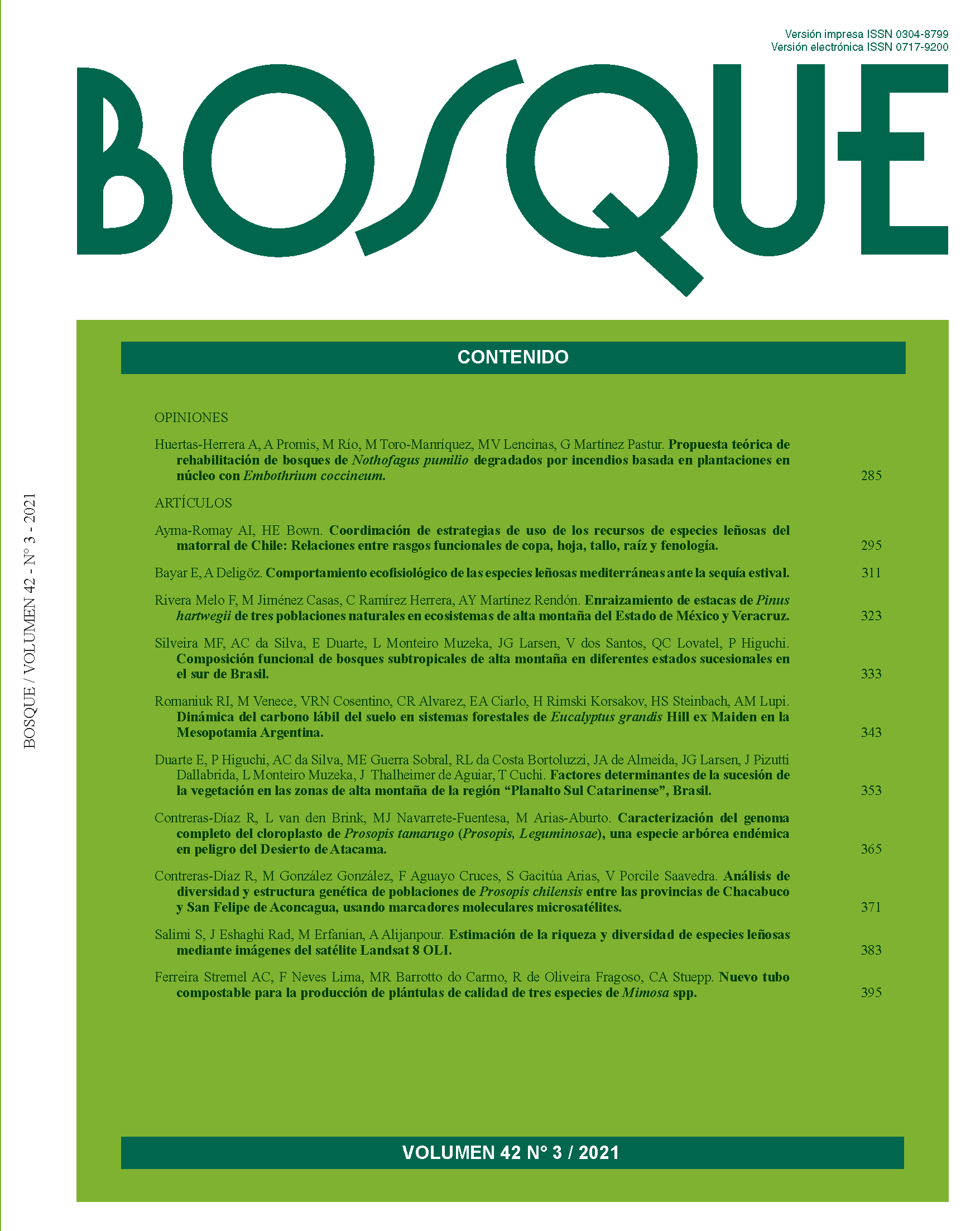Functional composition of subtropical highland forests in different successional stages in southern Brazil
Main Article Content
Abstract
Ecological succession is one of the most important processes in forest ecosystems, still poorly understood in the highland Araucaria
forests of Southern Brazil. Here we investigated this process by describing functional composition changes in response to a vegetation
successional mosaic in four forest fragments in the municipality of Urubici, State of Santa Catarina, Brazil. Two fragments were
classified as in advanced stage of succession and two were classified in early stage. The following functional traits were determined:
wood density, leaf area, specific leaf area, dispersal syndrome and leaf phenology. For each fragment, we determined the community
weighted mean (CWM) and the functional diversity (RaoQ). Data were analyzed by descriptive statistics, t and Mann-Whitney tests
and Principal Components Analysis. We found that the successional stage is a relevant source of functional heterogeneity. At the
advanced-successional stage, tree communities have harder woods, more membranous and semi-deciduous leaves and higher functional
diversity. Conversely, at the early successional stages, forests have softer wood, more coriaceous leaves and lower functional diversity.
We concluded that the studied forests showed a high functional composition heterogeneity, partially determined by a successional
mosaic. While perennial species with lower values of specific leaf area and wood density predominated in the early successional areas,
semi-deciduous species with higher values of specific leaf area and wood density prevailed in the late successional ones.

